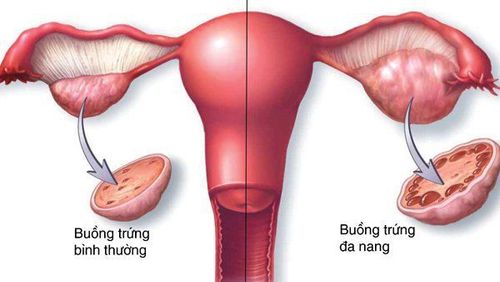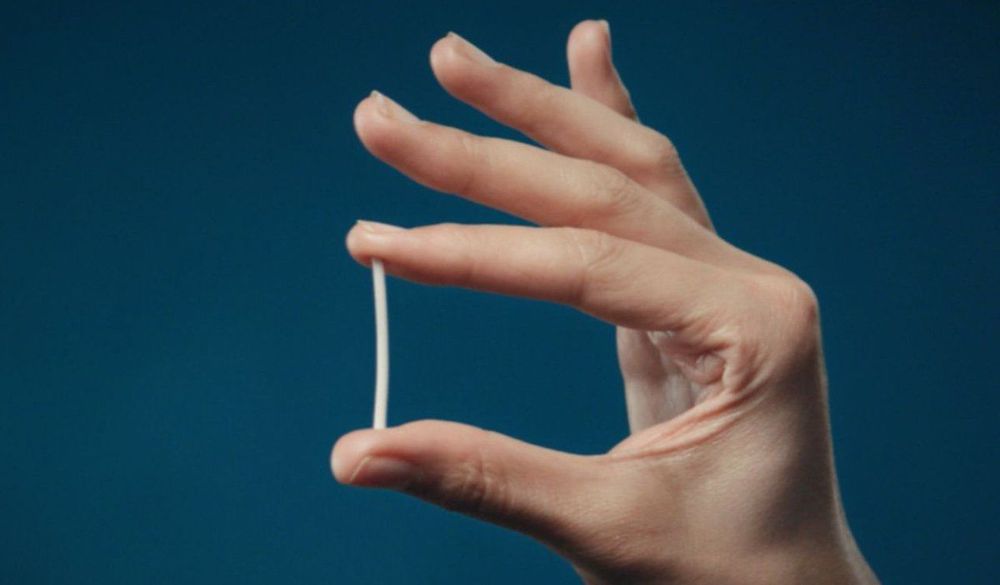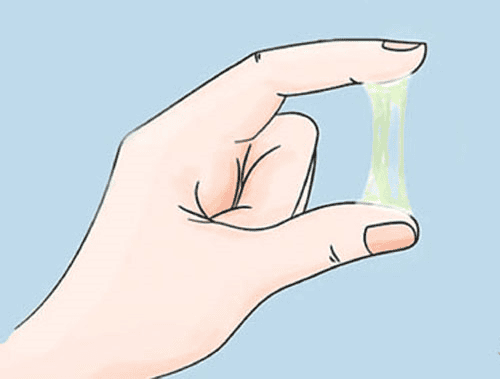This is an automatically translated article.
If there is dark brown discharge before menstruation or dark brown discharge after menstruation with other unusual symptoms; It could be a warning sign that you are experiencing diseases such as vaginal infections, hormonal imbalances, gynecological diseases.1. Vaginal discharge with dark brown mucus is abnormal?
Brown vaginal discharge can look alarming, but it's not always a sign of a medical condition. You may see vaginal discharge this color around the time of your period. Because when blood takes extra time to exit the body from the uterus, it becomes oxidized. This can make the blood appear dark brown or dark brown. If you experience brown mucus discharge, take note of the timing and other symptoms you experience.Trắc nghiệm về khả năng sinh sản
Hiện nay, các vấn đề về khả năng sinh sản đang ngày càng được quan tâm hơn khi những dịch vụ chăm sóc sức khỏe được phát triển mạnh mẽ. Tuy nhiên, có phải tất cả thông tin bạn được tiếp cận từ trước đến nay đều chính xác?
Bài dịch từ: webmd.com
2. The cause of abnormal black brown discharge
2.1. Hormonal Imbalances Brown discharge can signal a hormonal imbalance. Estrogen is a hormone that helps to stabilize the endometrial lining. If you have too little estrogen circulating, the lining can break down at different points throughout the cycle. As a result, you may experience brown discharge or other unusual bleeding.2.2. Use of hormonal contraceptives Hormonal contraception, such as oral contraceptives, can lead to brown discharge during the first few months of use. If this continues for more than three months, talk to your doctor about changing your birth control method.
2.3. Ovarian cysts Ovarian cysts may not cause any symptoms and may go away on their own after a few months. Sometimes, cysts are left untreated and can grow larger, causing symptoms such as a brownish mucus discharge to pain in the pelvis.

Bacterial vaginosis is a non-sexually transmitted infection, caused by an overgrowth of harmful bacteria, resulting in a change in the texture, color, or odor of vaginal discharge.
2.5. Endometriosis Endometriosis is a condition in which the lining of the uterus grows in places outside the uterus. It can cause symptoms like menstrual cramps, abnormal vaginal discharge between periods. Other symptoms may include: bloating, nausea, fatigue, constipation, diarrhea, painful urination, pain during sex.
2.6. Polycystic ovary syndrome (PCOS) If you have polycystic ovary syndrome, you may experience irregular periods, there may be more than 35 days between each period, and brown spotting between periods. . Other symptoms may include: headaches, pimples, darkening of the skin, poor hair growth, depression, anxiety and mood swings, weight gain.
2.7. Ectopic pregnancy Sometimes a fertilized egg can implant itself in a fallopian tube or in an ovary, abdomen, or cervix. This is called an ectopic pregnancy. In addition to brown mucus discharge, an ectopic pregnancy can cause:
Sharp pain in the abdomen, pelvis, neck or shoulders. Pain on one side of the pelvis. Dizzy. Fainting. Increased rectal pressure. 2.8. Miscarriage When you have a miscarriage, symptoms can come on suddenly and include a stream of brown fluid or heavy red bleeding. Other symptoms may include: cramping or pain in your lower abdomen, tissue or blood clots coming from the vagina, dizziness, fainting. Bleeding in early pregnancy can be normal, but it's important to report brown discharge or other unusual symptoms to your doctor right away, to diagnose the underlying cause and direct it. guide you on the next steps.
2.9. Postpartum Vaginal Discharge This is bleeding between four to six weeks after childbirth, which usually begins to bleed heavily, filled with small blood clots. After a few days, the bleeding slows, and the blood becomes pink or brown. After about 10 days, this vaginal discharge again changes to yellow or cream before it disappears completely. See your doctor if you have a foul-smelling discharge or fever, or have large blood clots. This could be a sign of an infection.
2.10. Perimenopause The period of months and years before menopause is called perimenopause. Most people begin perimenopause sometime in their 40s. Perimenopause is characterized by fluctuating estrogen levels. This can cause unusual bleeding or mucus, which can be brown, pink, or red. Other symptoms may include: Hot flashes, insomnia, irritability and mood swings, vaginal dryness, changes in libido.
2.11. Contraceptive implant This is a type of hormonal birth control that is implanted in the upper arm, just below the skin. It releases the hormone progestin into the body to prevent pregnancy. Irregular menstrual bleeding and brown discharge as your body adjusts to hormones are common side effects of this birth control.

3. Dark brown discharge before menstruation
Brown discharge before your period is usually harmless, and there are many reasons for it. Sometimes, it can indicate you're pregnant or perimenopausal. Less commonly, it can be a sign of an underlying health condition. If you are not pregnant, brown discharge can be caused by:Old blood from a previous period. Menstruation has just begun, and there is very little bleeding. Ovulation, discharge may be pinkish-brown. A reaction to a Pap smear or vaginal exam. Reaction to sex. For people in their 40s or 50s, brown discharge before menstruation can be a sign of perimenopause. Pelvic inflammatory disease is an infection of the cervix and uterus that can cause brown vaginal discharge. A sexually transmitted disease, such as gonorrhea or chlamydia. A brown discharge with an unpleasant odor may occur if a foreign object enters the vagina. Objects that can cause this include: Tampons, condoms, IUDs. Polycystic ovary syndrome. Brown discharge can be a symptom of cervical cancer, but this is extremely rare.
4. Dark brown discharge after menstruation

Period leftover blood: Blood that takes longer to exit your body becomes darker, often brown. It may also appear thicker, drier, and more clotted than regular blood. The brown color is the result of oxidation, which is a normal process. It happens when your blood comes in contact with air. You may notice your menstrual blood becoming darker or brown near the end of your period. Some women develop brown discharge for a day or two after their period ends. Others have brown discharge for a week or two. It really just depends on how well your uterus sheds the endometrium and how quickly the blood exits your body. While dark brown discharge after a period isn't usually a big deal, it can indicate an abnormality when accompanied by other symptoms: If you experience brown discharge and postmenstrual cramps , it can be caused by polycystic ovary syndrome or early pregnancy. An early miscarriage can also cause these symptoms. Blood from a miscarriage can be red, but it can also be brown and resemble coffee grounds. Bad-smelling brown discharge after your period: Menstrual blood usually has some odor, but if you notice a brown discharge with a foul odor, it's most likely caused by a sexually transmitted infection. In short, in many cases, a dark brown discharge before or after your period can still be normal - but be sure to be aware of any other symptoms you're experiencing. See your doctor right away if you notice brown-black mucus discharge along with other unusual symptoms.
Customers who need medical examination and treatment can directly go to Vinmec International General Hospital nationwide, or book an appointment online HERE.













